My 1994 Mazda RX-7 has been a mix of pleasure and pain
In November of 2020, I joined the rotary club.
It was a product of timing, really. What the classic car market giveth with one hand, it taketh away with the other. Like most enthusiasts I’ve grown up surrounded by cars, waiting patiently for the moment a dream car from childhood would depreciate enough to perfectly intersect with my budget at a given stage in life.
Antony Ingram the Assistant Editor for Hagerty UK. He was once given a Toyota Paseo for free, but soon came to appreciate that the best things in life aren’t free, and promptly bought the Mazda RX-7 you see here.
It was tantalizing watching the values fall in the 2000s, seeing Honda NSXs pop up for £15,000 and Renault Sport Clio V6s dip lower than you’d pay for a half-decent Clio Trophy these days. Then, they began climbing again just as reality began to dawn: I wasn’t even close to having enough disposable income to buy one, let alone enough to then maintain the car after purchase. Values and budget never intersected; one curve merely followed the other, and my frustration grew.
Soon there was just one car left that fit my criteria—one last Japanese icon from the “bubble era” that seemed achievable. A car that could hold its own with NSXs and Nissan Skylines: the Mazda FD-generation RX-7 (1992–2002). Of course, even these early ’90s RX-7s were rising in value as enthusiasts clamored for the remaining examples. The clock was running.
I’ve had a fondness for Mazdas since buying my first MX-5 (Miata) back in 2009. That was a car I acquired mostly because it was an inexpensive way into something with rear-wheel drive, and it had double the power of the Fiesta it was replacing.
The MX-5’s Mazda RX-7 big brother though had always been out of reach. In 2021 money it translated to around £70,000 when new, and was never something that could be run—like the MX-5—on a relative shoestring. Moreover, most examples that cropped up for sale were (usually tastelessly) modified. Given the “FD” RX-7’s needy reputation—it turns out sequentially-turbocharged rotary engines require plenty of maintenance, who knew?—taking on someone else’s project, however affordable, seemed wholly unwise.
I’d kept a beady eye on values then, assuming that like every other car on “the list” it would soon become unattainable. What I did not expect was a car to fall basically into my lap when I’d all but lost hope.
In one of the rare breaks between 2020 pandemic lockdowns here in the U.K., I’d flown to Germany for a Mazda 100th anniversary event, at which several of the company’s past masters were available to drive. A red 1994 Mazda RX-7 was on the list, one of Mazda U.K.’s collection. Since I’d driven it at a previous event I concentrated on other cars: a rare 929 coupe, a 10th Anniversary MX-5, a second-generation RX-7 convertible.
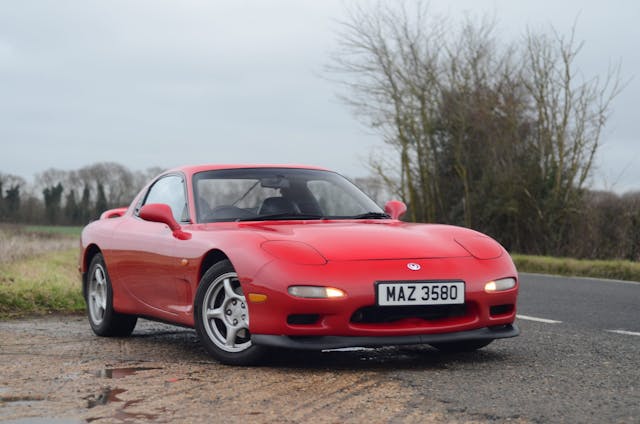
Then I caught wind of a rumor that one of these Mazdas was for sale. My ears pricked up: Cars as original as those in manufacturer heritage fleets are rare on the open market, making them canny buys. I’d assumed that it would be one of the MX-5s (having sold my last one a few years ago, I was already itching for another), or perhaps the V-6-engined MX-3 I’d actually tried to buy three or four years prior. A quick chat with the right person at Mazda revealed it was actually the red RX-7. The suggested price was one I genuinely couldn’t refuse. I offered to buy it on the spot.
I’ll admit to some nerves when finally arranging to pick the car up, last December. These cars do have a capital-R “Reputation”, and a preliminary test drive had revealed a few things that need attention. Things, I’d add, reflected in the asking price. The car appears to be bypassing the second turbocharger, with little extra power apparent over 4500 rpm, so that’s probably job number one. At least parts should be easy to come by.
But broadly, it drives as cleanly as its blissfully standard appearance would infer and, for the first time, my garage is occupied by a genuine dream car. Now I just need my budget to intersect with its thirst for fuel and oil. If you own an RX-7, or indeed any rotary, do share your experiences in the comments, below. For an inkling of how my first year of RX-7 ownership went, read my diary entries:
April 12, 2021: Charging around

I knew what I was getting into when I bought an RX-7, but when the clouds finally dispersed long enough for dry, salt-free roads late in February, it was nevertheless still disappointing to excitedly turn the key to the sound of … absolutely nothing at all. Nada. Not even the click of a starter solenoid drawing those final few electrons.
It was of course a flat battery. The last time I’d driven the car was on New Year’s Day, and in a fit of optimism I’d avoided disconnecting the battery assuming that, at some point over the course of early 2021, there’d be a clear, dry weekend on which to give the car a lockdown-friendly but vital fluid-circulating spin.
The Mazda had lulled me into a false sense of security though, because each time I’d popped into the garage—a spot of cleaning here, some idle staring at Hiroshima’s bubble-era beauty there—the immobilizer light had been glinting brightly from the interior, suggesting all was well.
This isn’t my first rodeo though and I’ve had a battery charger and conditioner lying around the garage for years, ready to dispense the elixir of carefully-managed electricity to large, useless lumps of lead-acid. It took a couple of days to bring it back from the brink and then I let it run a top-up program until the following weekend. A blinking green light signaled success.
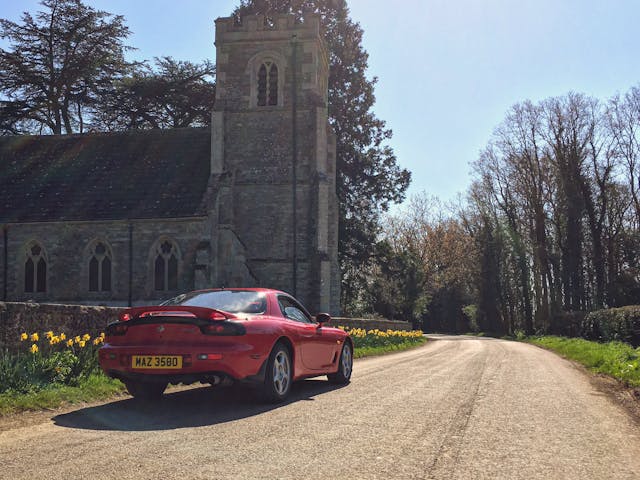
And wouldn’t you know it, the immobilizer deactivated, the car started up, and the only sign something was amiss was the string of zeroes on the trip computer. A celebratory but unspectacular drive followed just to check everything was A-okay, along with a distressingly expensive top-up of the 76-liter tank.
With the weather picking up I’ve been able to go for a few more drives since. It’ll take a trackday or a good drive on roads more spectacular than Northamptonshire can offer to really get under its skin, but I feel like I’m beginning to peel back the RX-7’s layers.
It’s capable in the corners for a start; tiny dimensions (it’s smaller in length, width and height than a 987 Porsche Cayman), modest weight (1310 kg, says the brochure, so also lighter than a Cayman) and fairly meaty tires (225 section on 16-inch wheels) seem to bond it to the road in a way I’ve not experienced in cars of a similar vintage.
The control weights are spot-on too and the smoothness of that engine—even though it needs some attention to deliver its full output (more on that at a later date)—give it a feeling of integrity that’s unexpected given the reputation of rotary cars for being a bit flaky. I’m often wary of driving hero cars, let alone owning them, but so far the RX-7 is more than living up to expectations. When the battery isn’t flat, anyway.
July 20, 2021: No, it didn’t blow up
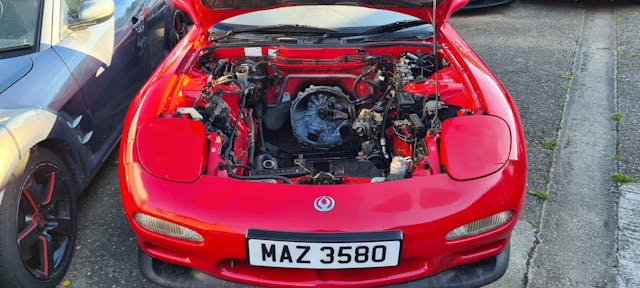
I now own two cars with which I feel the need to qualify their existence upon introduction. The first was my Toyota Paseo daily driver, perhaps the most unexceptional of the 1990s coupe offerings. Its unloved status, plus its slightly rough condition with peeling lacquer and a now quite rusty dent in one door, means I feel obliged to introduce its presence in my life with “I got it for free.”
The Mazda though needs its own qualifier as, for the past month, the car has undergone an engine rebuild. I knew it was coming, and you probably knew it was coming, but it’s what you might call a preventative measure.
A compression test back in May suggested the infamous rotor tip seals weren’t long for this world. Since I’d budgeted for this kind of work when buying the car—despite my excitement, I did go into this purchase with eyes wide open—I figured there was no time like the present and booked the car in to HME Rotary in Coventry for the job that all rotary-engined cars will one day undergo.
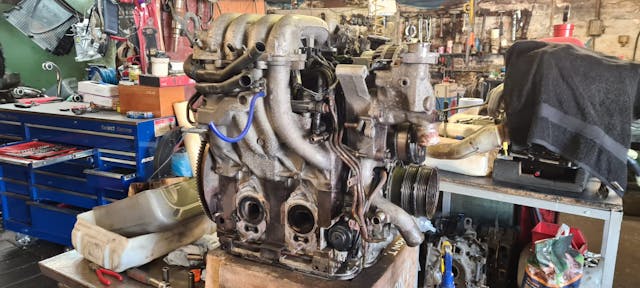

It was a job even finding a specialist who’d work on an RX-7, with most concentrating on the more affordable and much more numerous RX-8, but HME stood out for its long experience with Wankel engines, stretching back to the 1970s. Given the company has tackled everything from the expected RX-7s to the vanishingly rare Citroën GS Bitrotor and Suzuki RE-5 motorcycle, Mick Hurley and his team seemed like a safe bet.
Along with the rebuild, it’d be a chance to investigate and perhaps solve some of the other issues I’d experienced in recent months, such as a lack of boost at high revs, some stuttering under load, and most recently, an increasingly recalcitrant starter motor.
With the engine out of the car and on the bench, Hurley quickly identified some of the issues. Thankfully, the turbos themselves appear to be fine—the car only ever smoked a little at idle, so I figured as much—and the boost issues seem instead to have been a result of numerous collapsed, split, crusty or melted pipes in the car’s underbonnet “rat’s nest.”

The coil was effectively toasted too, and that’s been replaced, along with the spark plugs and HT leads. New-old stock starter motors are basically unavailable now—predictably, they’re not shared with any more humdrum Mazda—so a reconditioned one went in instead, while a bunch of other ancillaries and of course new fluids should keep the car operating as it should until the next service.
As I type, the car is currently within the first 500 miles of its running-in period before an oil change, and I’m limited to an excruciatingly low 4000 rpm for a thousand miles after that. I’ll reserve judgement on the improvements until the next update then—provided I’ve covered enough miles—but in the meantime, I’ll just have to keep everyone informed that it didn’t actually blow up …
March 1, 2022: A thousand down, five hundred to go

Whatever your car revs to, half it. Then imagine what it would be like sticking to those revs for the next seven or eight months, and you’ll have some idea of the frustration of the Mazda’s running-in period, following its engine rebuild.
With an engine that will happily spin well past its 7000 rpm red line, and whose power band only starts in earnest at around 2500 rpm, the result is a car that needs miles adding as quickly as possible so I can experience its full potential, but also one that hasn’t actually been a great deal of fun to own since July last year.
The RX-7 is still perfectly drivable below 4000 rpm of course, and given its gearing, would still—where the law allows, as brochures used to say—hit 100 mph or so in top.
But given it’s happiest above 2500 rpm (in more ways than one—more on that in a sec), being limited to 4000 rpm means an effective window of drivebility of only about 1500 rpm. Even my daily-driven diesel Smart allows a useful range 500 rpm wider than that.
It can get through that 1500 rpm pretty quickly, so getting up to speed feels like going through a 12-speed gearbox in a truck. Brrrr-gear-brrrr-gear-brrrr-gear-brrrr-gear … oh, already at the speed limit are we?

2021’s fuel shortage and subsequent spike in prices hasn’t helped the motivation for driving, and nor has winter. Sticking a hundred quid in the tank to go maybe 300 miles stings a bit, and while the RX-7’s thirst doesn’t bother me per se—I’m unlikely to do more than a few thousand miles per year in it—running-in miles aren’t exactly fun miles. Likewise, while I’m trying not to be too precious about bad weather, I’d at least like to enjoy the thing if it’s going to rot away in the salt.
It’s all just part of the game, of course. And slowly but surely I’ve been ticking off the distance, on dry weekends, or when my wallet’s been having things just a bit too easy.
The first 500 passed between July’s rebuild and December, when HME Rotary took the car back for a quick checkup, oil change and idle adjustment. I’ve done another 600 or so since, so just 400 more to go before another oil change service at HME.
At the same time, I’ll get them to investigate the issue I hinted at earlier. Below the engine’s sweet spot, and under higher load, such as up a motorway incline, the engine will intermittently stutter, as if it’s not getting quite enough fuel. A downshift and a rev seems to clear it quickly. Part of me suspects throttle position sensor (old electronics can be flaky), or perhaps something as simple as a clogged fuel filter.
Either way, it needs sorting, so the next 400 miles can’t come soon enough. There’s half of the rev counter still waiting to be explored…
October 25, 2022: So here’s the thing…

It’s been nearly eight months since I last wrote about the RX-7. Predictably, there is a reason for this.
The good news is, the running-in process went without a hitch. Well, I assume it did, because in June, at nearly 1500 miles on the dot, I drove through the gates at HME Rotary in Coventry for its post-running-in service, and I’ve not so much as sat in the driver’s seat since.
It relates, in a long-winded way, to the car’s MOT test, carried out while it was in HME’s care. Unfortunately, the car failed. One thing was easily fixed, the other cluster of things not so much.
The easy fix—albeit not a cheap one—was a new catalytic converter, as the Mazda failed its emissions test. Given what rotaries kick out I’m guessing it’d had a hard life, and with the last 1500 miles run at fairly low revs, it hadn’t really had a good blow-through in at least a year either.
Wallet relieved of the better part of 800 quid for a new cat and a few other attention areas, the bigger issue was several failure marks on corrosion. I’d say that the British weather had finally caught up to it after all these years, but I think it’s been there before, as the MOT tester and HME found evidence of previous slapdash repairs, and these were as much at fault as Mazda’s own factory handiwork.
HME laid things bare: I could have everything just patched up again, but the car would probably need some proper metalwork at some stage anyway—so they advised me to start hunting for bodyshops.
This turned into its own heart-stopping palaver, as restoration specialists are apparently in some demand right now. One place suggested by a couple of acquaintances feigned interest and then went completely quiet, and another apologized for being busy, suggesting they could only fit the car in by summer 2023 … a whole year away at the time.
Before the palpitations really started, another nearby specialist finally got back in touch and could take the car in just a couple of weeks. Duly booked—after spending several hundred pounds more to put the car on a trailer, have it stored for a week, and then dropped off at the bodyshop—it’s been there ever since.
I won’t reveal just yet who is doing the work—that can wait until the car is back on its wheels—though the shots I’ve seen so far are very promising indeed. There was some quite significant corrosion, and with each photo they send through, it’s being replaced by clean, treated, and carefully painted metal.
That’s just as well given how much it’s already cost, but those of you who’ve had cars professionally restored in the past will appreciate just how excruciating those numbers can be, and why I’ll probably refrain from breaking down the bill until such a time as I finally sell the thing …
Check out the Hagerty Media homepage so you don’t miss a single story, or better yet, bookmark it.

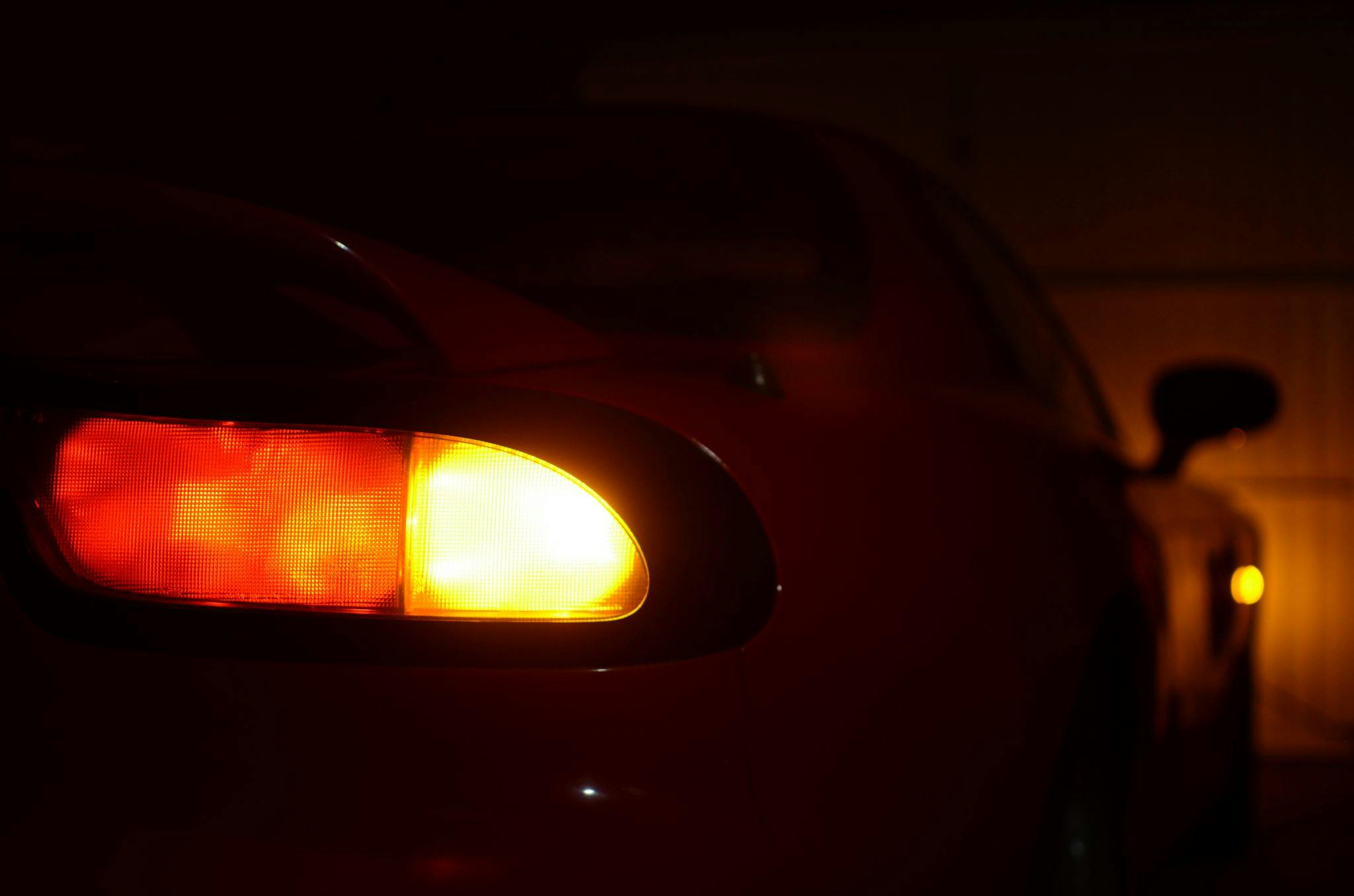
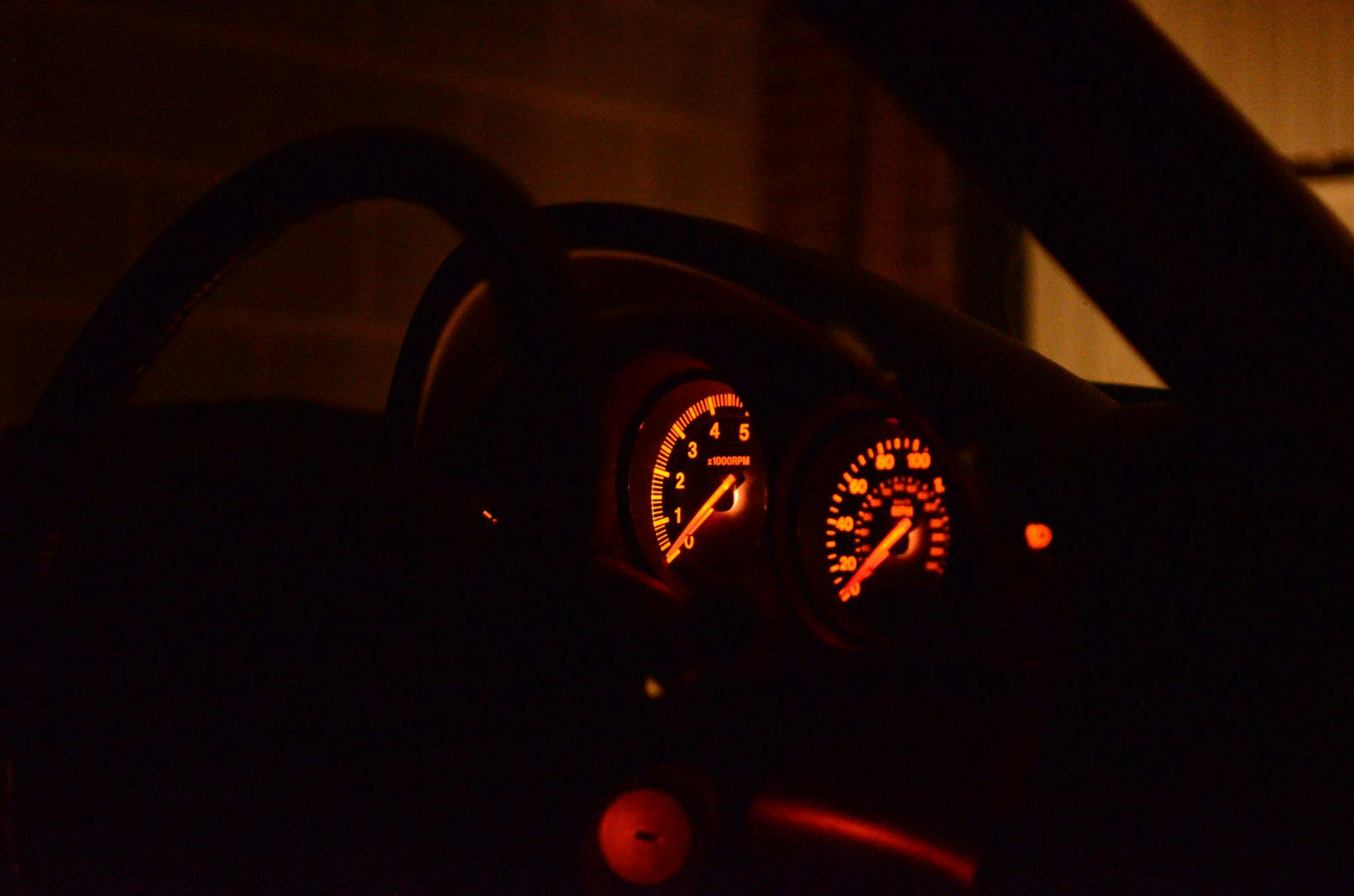
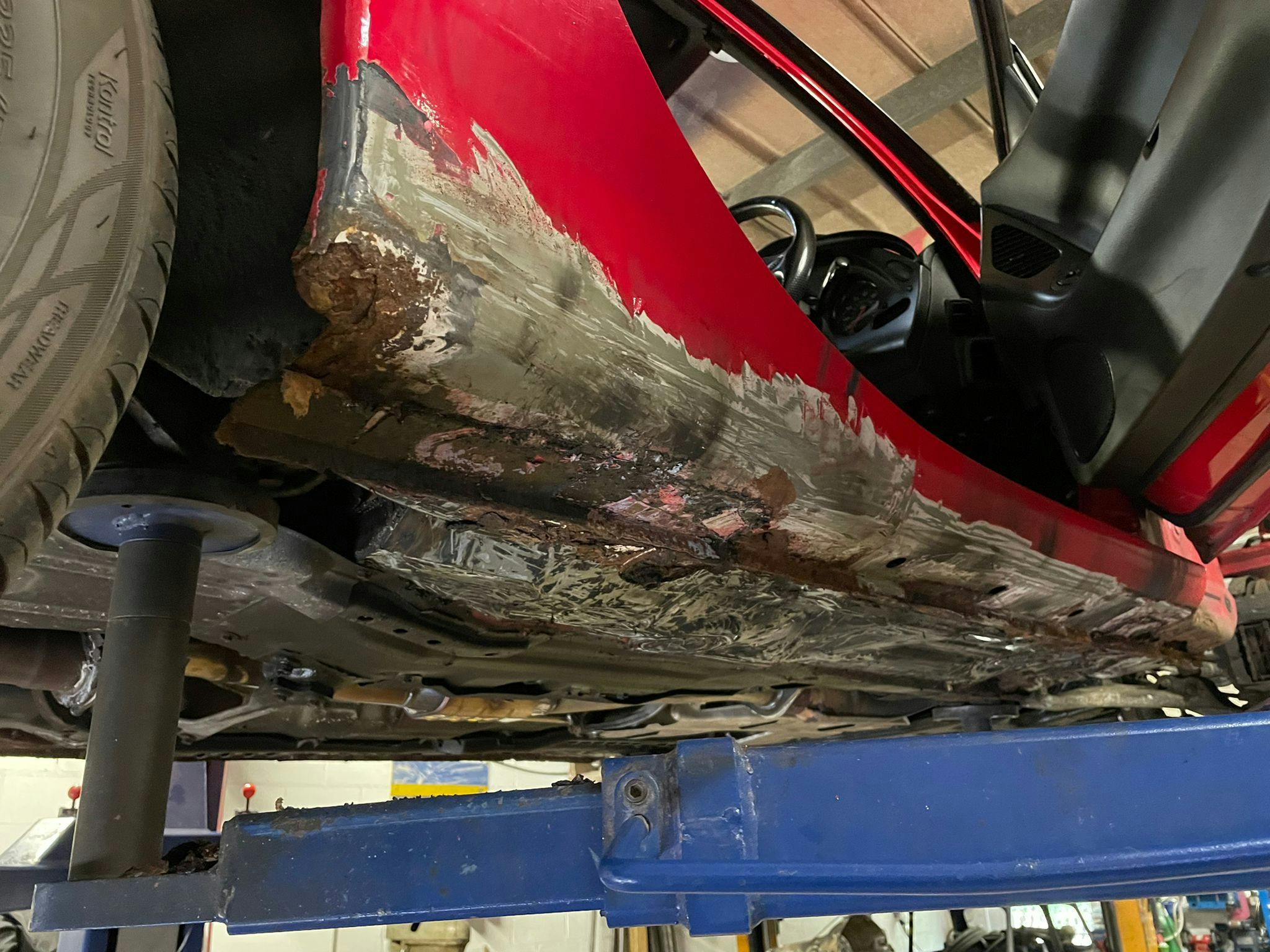
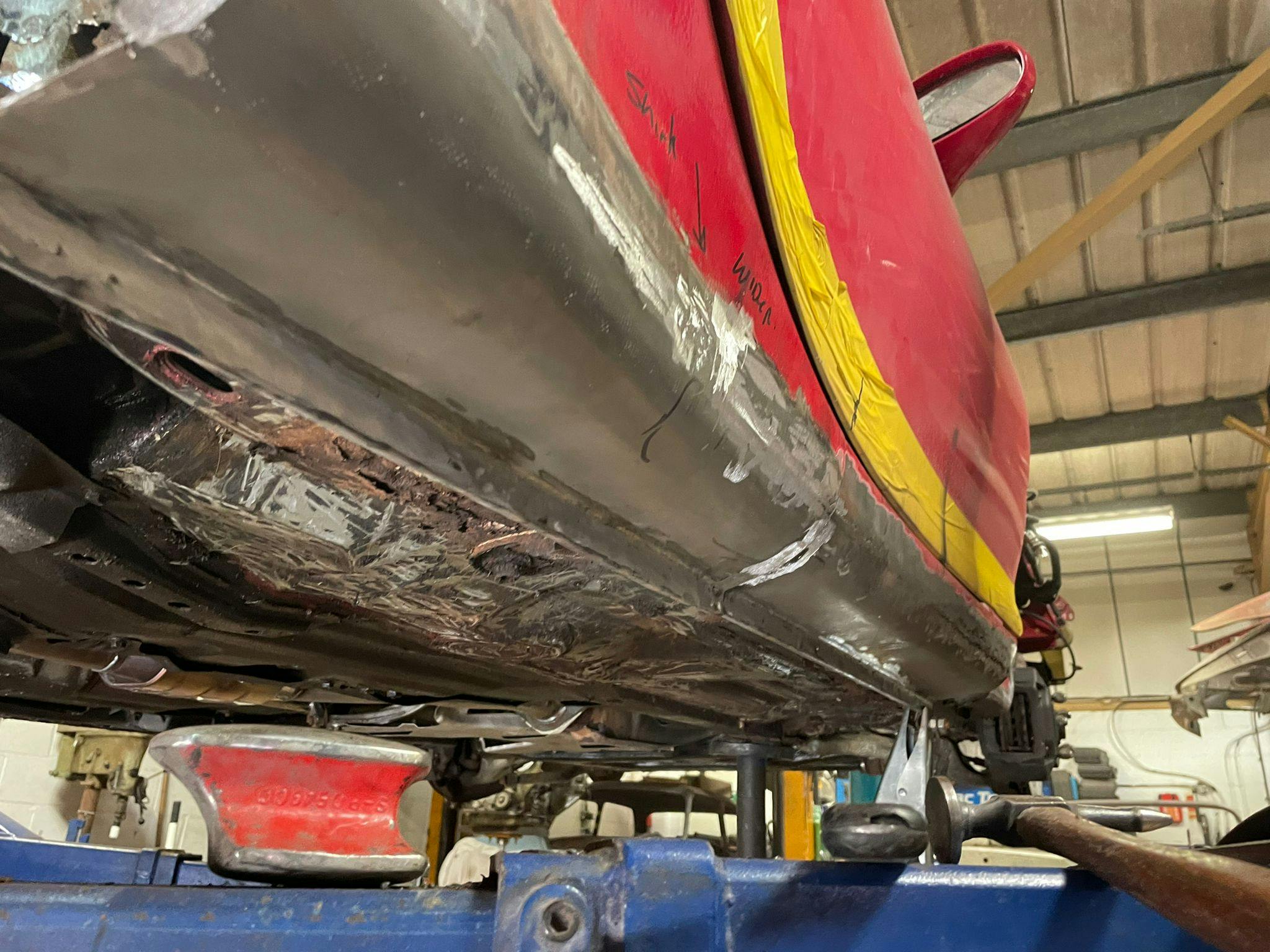


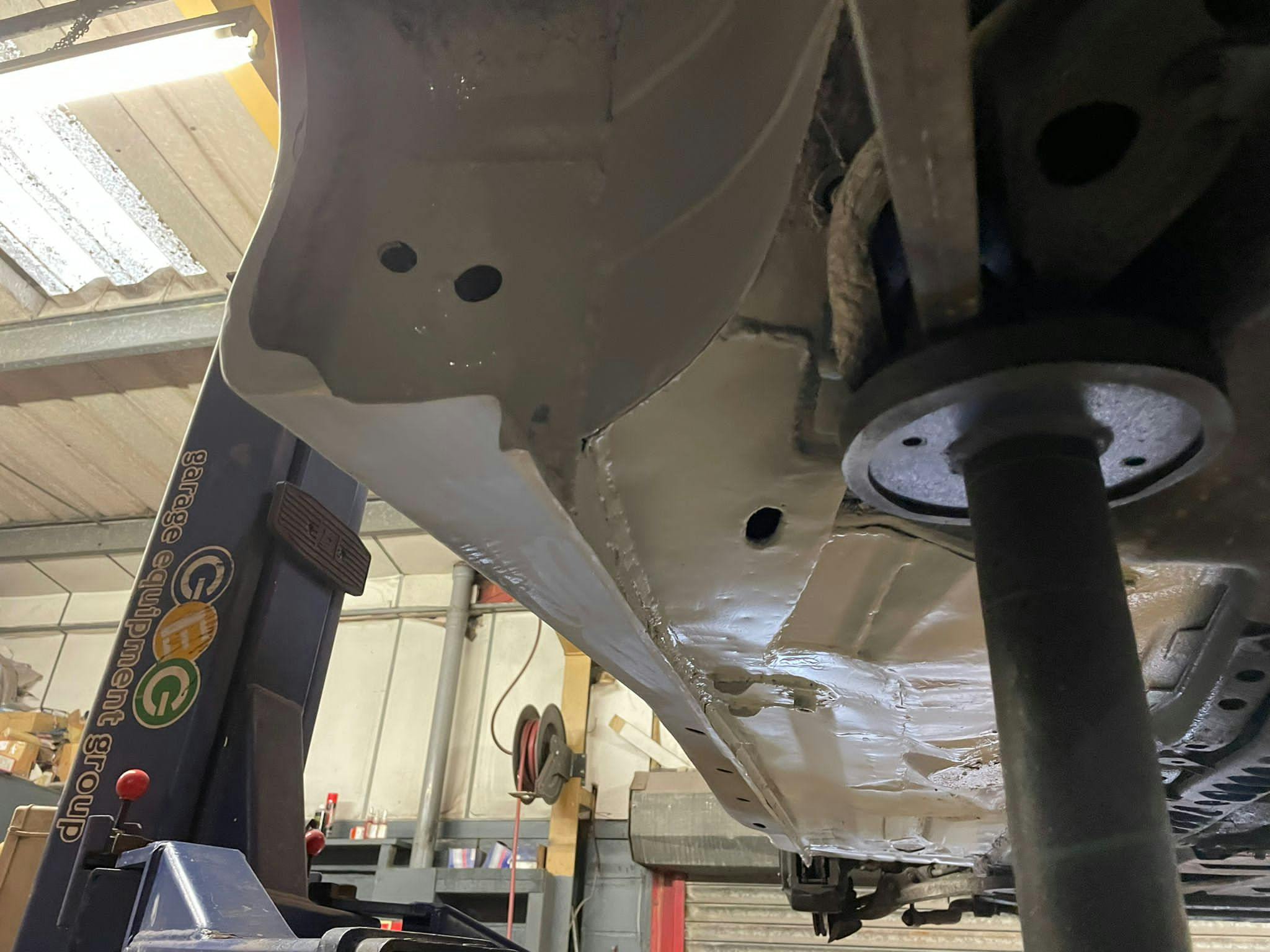


Wow, that is some crazy corrosion right there! But these are special cars, so I’m glad to see you’re fixing it.
Did you never put it up on a rack to look at it before buying it?
My 1988 RX7 GTU is the only car I regret selling. It was a great driving car, my daily driver for 10 years until I became a father and couldn’t get a baby seat in it! I bought it from one brother-in-law (the original owner), then sold it to another brother-in-law who promptly trashed it and sold it.
Can you say, “Money Pit”?
Ah, the Salt Lands. That is real rust alright. On the west coast of North America, or at least most of it, Canada included, we don’t see rust like that in a post-1960s car unless it came from “back east”. And on the Prairies (Canada) or Great Plains (US), most post-1970 cars might have some surface corrosion but not the kind of panel rot your RX-7 has. I had a very sweet 1983 RX-7 on the Prairies in 1995-96 (when it was just a used car; I commuted in it!) and it had no real rust at all… Since leaving behind the Rust Belt of eastern North America in 1989, I had forgot how invasive rust can be in a newer car! I’m glad you found someone to do the work; it is looking much better! Don’t tot up the bills. It’s a toy, not an investment. If you do, you’ll just end up weeping into your tea.
The FD RX-7 is one of my favorites. I admit I passed on the opportunity to buy one 20 years ago and bought my ’97 Supra Turbo instead. It was tempting though.
The FD RX-7 is one of my favorite cars and easily my favorite Mazda. I had the chance to buy one but I passed and bought a Supra Turbo instead.
Comments won’t post for me so I’m trying something different
It’s so cool to know there’s an FD in Northamptonshire! This is also my dream car but I have the SE predicament as you, even if I could buy one I doubt I could afford to run it, so I have an rx8 instead